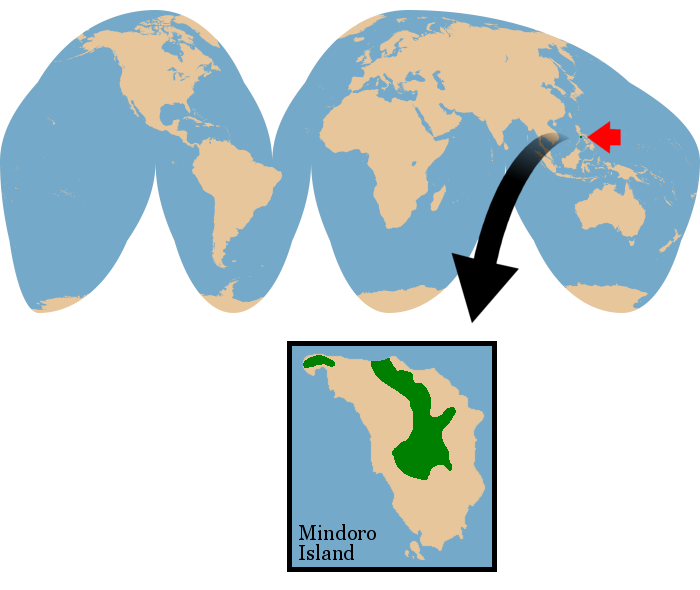Kingdom: |
Animalia Chordata Mammalia Artiodactyla Suiformes Suidae Suini Sus |
Common name:
Scientific name:
Other names: |
Mindoro warty pig
Sus oliveri
Oliver's warty pig, Baboy Damo, Beyek, Sanglier de Mindoro, Mindoro pustelschwein |
Physical Characteristics
The Mindoro warty pig is an enigmatic species. No whole specimens have ever been scientifically studied, and few live animals have ever been photographed. Based on limited skull measurements, the species is similar in size to the Philippine warty pig (Sus philippensis) and Visayan warty pig (Sus cebifrons). The overall coloration of this pig is dark brown or black. Like other warty pig species from the Philippines, males develop a mane of elongated hair (black, sometimes mixed with pale hairs) that extends from the top of the head to at least the shoulders. Based on camera trap images, females have a pale band across the bridge of the rostrum (approximately one third of the way between the eyes and snout) and a tuft of pale hair on the angle of the jaw. These features are less conspicuous in males. Male Mondoro warty pigs have visible tusks and develop a pair of protuberances ("warts") on their muzzle, midway between the eyes and the snout; additional growths on the angle of the jaw are said to be less well-developed.
Reproduction and Development
Nothing specifically known. Presumably similar to the Philippine warty pig (Sus philippensis). Infants are brown and marked with longitudinal stripes.
Ecology and Behavior
- Family group:
Solitary or in small family groups.
- Diet: Presumed to feed on roots and tubers, fallen fruit, and invertebrates, similar to the Philippine warty pig (Sus philippensis).
Habitat and Distribution

Conservation Status
- IUCN Red List:
Vulnerable (2016).
- CITES Listing: Not listed (2021).
- Threats: Habitat loss, overhunting, and hybridization with domestic swine.
- CITES Listing: Not listed (2021).
There are no estimates for how many Mindoro warty pigs survive in the wild. The species was formerly common and widespread across Mindoro, but habitat loss has created fragmented populations which, on the basis of encounter rates, are declining. This species is a traditional source of meat for local communities.





